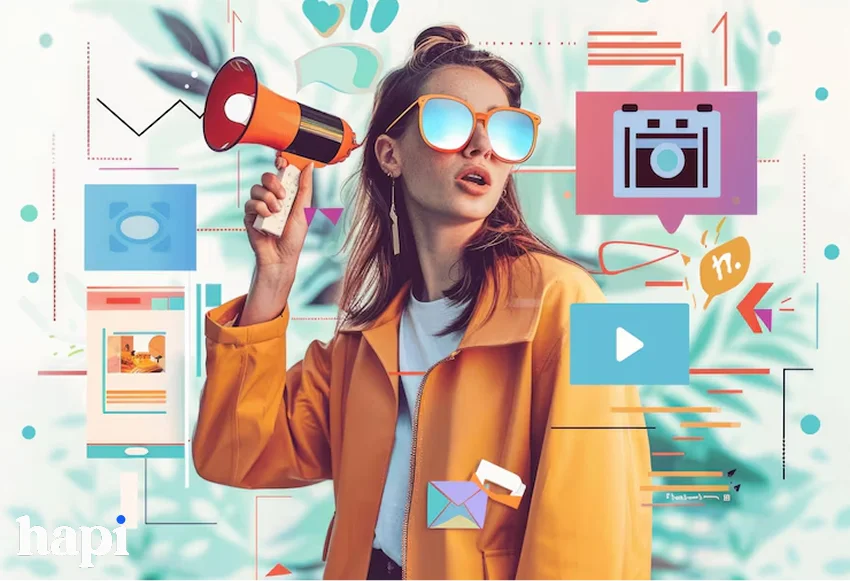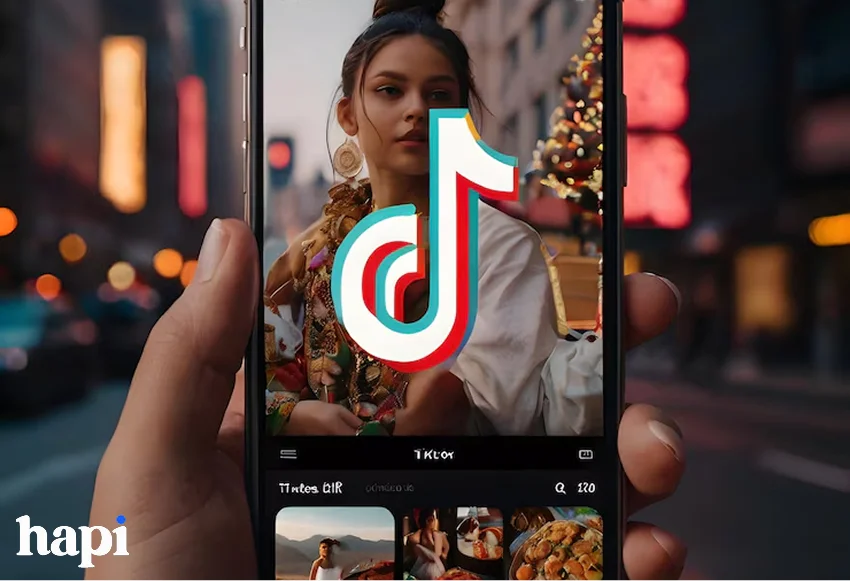
Have you ever wondered why some information goes viral on the internet while other content, possibly with higher quality, rarely receives any attention? Often, science, not luck, makes the difference. Your social media strategy might change from optimistic posting to planned audience building if you understand the dynamics underlying viral content.
This post will teach you how to examine today’s breakthrough viral trends, identify the psychological triggers that drive people to share, and provide you with useful methods to forecast what might become viral next. By the end, you’ll have a foundation for creating content that has the ability to go viral on its own without depending on luck.
Understanding the Science Behind Viral Content

The science behind virality isn’t magical; it is definable. Content doesn’t “go viral” randomly; rather, it spreads because it sets off certain technological and psychological processes that promote sharing.
What Makes Content Spread Like Wildfire Online?
Fundamentally, viral material appeals to the needs and feelings of people. Content that evokes emotions, whether they are good (excitement, amusement) or negative (anger, anxiety), is shared much more frequently than content that attracts low-arousal reactions, such as sadness, according to research from the Wharton School of Business.
Consider the 2022 “Corn Kid” video that went viral. It was genuine joy that users couldn’t help but share, and the young boy’s excitement for corn wasn’t fake. Because it provided unexpected joy in under 12 seconds, the video received over 23 million views on TikTok.
Usually, at least one of these elements is present in the most shareable content:
– Unexpected facts that cast doubt on presumptions
– Information that supports preexisting opinions (confirmation bias)
– Narratives that evoke strong feelings
– Practical value that solves problems
– Social currency (making sharers look clever)
7 Psychological Triggers That Drive Social Sharing
Designing content with inherent virality can be facilitated by knowing what encourages people to share. The following seven psychological triggers are frequently seen in widely shared content:
1. Social validation is the process by which people share content that enhances their reputation among their network. Information that conveys insight, comedy, or intellect is more likely to be shared.
2. Emotional Connection: People share content that evokes strong emotions in them. Because it mixed enjoyment, challenge, and purpose, the 2014 ALS Ice Bucket Challenge produced 17 million videos.
3. Utility in Practice: People enjoy sharing information that benefits others. Life hacks, how-to manuals, and unexpected advice because they offer instant benefits.
4. Stories According to cognitive researcher Jerome Bruner, information presented in the form of stories is 22 times more memorable than facts alone. Stories will stick in your audience’s memory and be shared more than data.
5. Surprise Elements: Unexpected information is a natural part of our minds. Expectation-subverting content makes people want to share the unexpected finding.
6. Identity Expression: Individuals post information that supports their self-perception or desired image. This clarifies the reasons behind the spreading of particular political, cultural, or value-based content among particular communities.
7. Belonging: As a kind of cultural signaling, anything that gives people a sense of belonging to something greater than themselves—a movement, a group, or a shared experience—gets shared.
How Algorithms Influence Content Virality Across Platforms
Different signals are used by each platform to decide which material to amplify:
Unknown producers can quickly reach millions of followers since TikTok’s algorithm gives watch time and completion rate more weight than follower numbers. Regardless of the creator, videos that hold viewers’ attention until the very end are more widely shared.
Instagram places a high value on early engagement, with the first 30 to 60 minutes being critical to a post’s reach. Content that generates quick responses gets shown to more people.
LinkedIn’s algorithm favors posts that create conversations. Content prompting thoughtful comments performs better than posts generating only likes.
YouTube rewards total watch time above all else, which explains why the platform increasingly surfaces longer videos that keep viewers engaged.
Analyzing 5 Breakthrough Viral Trends of 2023

Examining recent viral successes offers important information about what’s currently effective. Let’s look at five noteworthy themes that attracted notice in 2023.
Case Study: Deconstructing TikTok’s Most Shared Challenges
Although TikTok challenges still generate a lot of engagement, the most popular ones in 2023 went beyond simple dance moves. By using multiple potent components, the “30-Day Manifestation Challenge” received over 4 billion views:
1. Low barrier to entry: Anyone might take part by recording brief daily updates and writing down goals.
2. Progress narrative: There was a beginning, middle, and end to the challenge’s inherent story arc.
3. Personal transformation: Results could be showcased at the conclusion
4. Verification of the community: Viewers encouraged the participants.
Successful challenges have one thing in common: they encourage participation while preserving the right to individual expression. Today’s viral challenges provide designers with customizable frameworks, unlike carefully choreographed dances that peaked in 2020–2021.
When creating challenge-based content, ensure your concept is:
– Simple to understand in seconds
– Open to interpretation and customization
– Tied to a clear hashtag
– Capable of showcasing personality
Behind-the-Scenes of Unexpected Brand Viral Moments
Brands that seemed to hit gold by chance produced some of 2023’s most popular moments, but a deeper look reveals careful planning.
Take Duolingo’s TikTok strategy. Their giant green owl mascot participating in inappropriate office behavior has generated millions of views. What looks like spontaneous humor actually follows a calculated approach:
– They embrace platform-native content rather than polished advertisements
– Their social team has significant creative freedom
– They respond quickly to trends rather than waiting for approval chains
– They’ve developed a consistent brand character with recognizable traits
Similarly, Stanley Cups experienced unexpected virality when a woman’s cup survived a car fire intact. The company capitalized on this moment by:
– Quickly engaging with the original content
– Gifting the creator a new car
– Creating follow-up content testing the cups in extreme conditions
These “unexpected” viral moments often result from brands that have built systems allowing them to:
– Monitor mentions in real-time
– Empower social teams to act quickly
– Maintain an authentic voice across platforms
– Capitalize on user-generated content
Why Some Memes Evolve While Others Quickly Fade
Although memes have a much shorter lifespan now, some are still able to develop and endure. The “Roman Empire” meme evolved into recurring ideas across diverse demographics after it started as men confessing how frequently they think about ancient Rome.
Memes that evolve share these characteristics:
1. Flexible format: The core concept can be applied to different contexts
2. Cultural relevance: They touch on universal experiences or current events
3. Remix potential: They invite creative adaptation and personalization
4. Cross-platform appeal: They translate well across different social platforms
Contrast this with the “Girl Explaining” meme that peaked and disappeared within weeks because its single-joke format offered limited variation.
Essential Tools for Tracking and Predicting Trends

Having the right tools to spot emerging trends gives you a crucial advantage. Here’s how to build your trend detection system.
Top 8 Analytics Platforms for Monitoring Content Performance
These platforms offer different strengths for tracking viral content:
1. Sparktoro: Uncovers what your audience reads, watches, and follows. Especially helpful for finding powerful voices in your community.
2. For any topic or domain, BuzzSumo displays the most-shared material on all platforms. Their Content Discovery feature spots rising content before it peaks.
3. Exploding Topics: Spots trends early in their development, frequently ahead of the media. Emerging themes from several industries are highlighted in their weekly email.
4. A free tool that displays search interest over time is Google Trends. What people are inquiring about your topic is shown in the “Related queries” section.
5. TrendHunter: Trends selected by humans together with an explanation of the reasons for the popularity of particular concepts. beneficial for more extensive cultural changes.
6. Brandwatch: Tracks social media discussions about particular subjects. Unusual conversation spikes are alerted to you by their Signal function.
7. Sprout Social: Monitors engagement trends and hashtag performance. Their listening technologies aid in determining the most effective content types.
8. The TikTok Creative Center displays popular music, hashtags, and creators. What is gaining traction on the platform is shown by their trend-finding tool.
Using AI to Forecast the Next Big Social Media Wave
The ability of AI technologies to forecast content performance is growing. There are several strategies worth considering:
Predictive analytics platforms such as Obviously AI and Pecan AI may analyze past content data to predict future trends. Patterns that human analysts might overlook are detected by these techniques.
Sentiment analysis tools such as Lexalytics and Brandwatch assist you in comprehending how people feel about a piece of information. You can spot new interests before they become popular by monitoring changes in sentiment surrounding subjects.
Natural Language Processing (NLP) tools like GPT-4 can analyze enormous quantities of content to find developing language patterns and subject groupings. These tools are used by some marketers to create content versions that may appeal to various audience segments.
Visual trends across platforms can be analyzed by Computer vision AI such as Clarifai, which can determine which image compositions, colors, and styles are popular.
How to Create a Trend Dashboard That Works
Creating a personalized trend dashboard ensures that relevant data is always available. This is a basic framework:
1. Establish the categories for your trends: Sort trends according to their significance timeline (developing, peaking, waning) and kind (content formats, subjects, hashtags).
2. Select your sources of data: Add industry publications, search trends, and platform-specific metrics.
3. Configure automated alerts: Generate warnings for unexpected engagement patterns or abrupt increases in pertinent keywords.
4. Create a review rhythm: Plan frequent evaluations (weekly for some industries, daily for fast-moving ones).
5. Include triggers for actions: Establish criteria (e.g., “If engagement around [topic] increases 30% week-over-week, create related content”) that elicit particular responses.
The following queries should be quickly addressed by your dashboard:
Which subjects are popular with our audience?
Which types of material are currently doing the best?
Where are our rivals concentrating their efforts?
What discussions could we genuinely contribute to?
You may create unique dashboards by combining data from many sources using programs like Cyfe, Databox, and even Google Data Studio.
Creating Your Viral Content Strategy Framework

With the use of tracking tools, psychological insights, and current trends, you can now develop a methodical strategy for producing potentially viral content.
Building Content That Aligns with Viral Patterns
Developing content with inherent shareability is more important than following every trend when it comes to creating material with viral potential. Adhere to this framework:
Start with a viral structure. The most-shared content typically follows recognizable patterns:
– Lists that promise specific value (7 Ways to…)
– Counterintuitive revelations (“Why Everything You Know About X Is Wrong”)
– Identity-reinforcing content (“Signs You’re A…”)
– Emotional storytelling with clear arcs
– Resource collections that solve common problems
Layer in psychological triggers. The most powerful combinations include:
– Practical utility + surprise
– Emotional connection + identity expression
– Social validation + belonging
Optimize for the algorithm. Format your content to match platform preferences:
– Front-load value in the first 3 seconds for short-form video
– Create open loops that encourage complete viewing
– Include caption hooks that stop scrolling
– Design for mobile-first consumption
Ensure easy shareability. Remove friction from the sharing process:
– Create clear, quotable moments
– Include share-worthy visuals that stand alone
– Pose questions that prompt tagging friends
– Segment longer content into shareable clips
For instance, instead of writing “Tips for Better Sleep,” write “3 Sleep Habits Neurologists Do Every Night” with startling facts, professional endorsements, and an easy-to-remember and share manner.
When and How to Leverage Trending Topics Effectively
Timing is crucial when connecting with trends. This decision framework helps determine when to engage:
Trend evaluation questions:
1. Is this trend aligned with our brand values and voice?
2. Can we add unique value to this conversation?
3. Is our audience actively engaging with this trend?
4. Are we early enough to contribute meaningfully?
5. Can we create content quickly enough to remain relevant?
If you answer “yes” to at least four questions, consider these approaches:
The “Yes, And” Method: Contribute your distinct viewpoint to an established trend. When the “What I Order vs. What I Get” format was trending, Chipotle created content showing how their actual food matched promotional images.
The Crossover Approach: Link two trends that don’t seem to be related or combine a trend with your area of expertise. The meditation software Calm developed “Calming Sea Shanties” to incorporate the popular sea shanties into their main product line.
The Pattern Interrupt: Utilize a well-known trend format while defying convention. Aviation Gin made a parody to show how similar the “We’re all in this together” COVID messaging that brands were promoting had become.
Avoiding Common Pitfalls in Trend-Based Marketing
Even experienced marketers make these common mistakes when pursuing viral content:
Forcing brand mentions: Awkwardly inserting your product into a trend creates inauthentic content. Instead, find natural connections or simply create enjoyable content that builds affinity.
Misunderstanding the trend’s context: Before participating, ensure you understand the cultural background and current usage. Brands have faced backlash by using trends rooted in serious social issues for light promotional content.
Following every trend: This depletes resources and results in a fragmented brand voice. Choose wisely and concentrate on trends where you can truly contribute.
Putting virality ahead of value: When content gains popularity but draws the wrong audience, it generates metrics that have no bearing on business. Always consider how the attention serves your larger goals.
Neglecting rapid response capabilities: By the time approval chains have cleared content, the trend may have passed. Create pre-approved templates and establish clear guidelines for real-time marketing.
Turning Viral Moments into Sustainable Engagement

After a viral moment, many brands see their metrics went back to normal. Use these tactics to steer clear of this:
From One-Hit Wonders to Long-Term Audience Growth
Many brands experience a viral moment only to watch their metrics crash back to baseline. Avoid this by implementing these strategies:
Create content bridges: As soon as you notice that your attention is growing, start producing “bridge content” that introduces your core value to new audiences. After a funny video goes viral, introduce your key topics with content that keeps the tone consistent.
Develop a content ecosystem: Build a system where viral pieces direct traffic to deeper content. This might include:
– Short-form videos that link to detailed guides
– Entertaining content that references your resource library
– Viral posts that introduce broader themes you regularly cover
Use the 3R Method: Produce material that is relevant to each piece of content in order to Reinforce your message, Redirect attention to conversion goals, and Retain new followers.
Think about how MrBeast gained his YouTube following: viral challenge videos draw notice, but his regular upload schedule, participation in the community, and variety of content convert visitors into subscribers.
Measuring Success Beyond Views and Shares
Virality means nothing if it doesn’t serve business objectives. Implement these metrics to measure meaningful impact:
Second action rate: What percentage of people who engaged with your viral content took another action with your brand? This indicates whether you’re attracting the right audience.
Audience retention: How many new followers remain engaged 30, 60, and 90 days after discovering you through viral content? This measures lasting impact beyond temporary attention.
Conversion contribution: How many conversions can be attributed to audiences first acquired through viral content? This connects viral moments to business outcomes.
Topic affinity: Are people who discovered you through viral content engaging with your core topics? This shows whether virality is building the right audience.
Brand sentiment shifts: Has overall conversation about your brand improved following viral moments? Tools like Brandwatch and Mention can track sentiment changes.
Create a simple dashboard tracking these metrics alongside vanity metrics to understand the true value of your viral content efforts.
Creating Your Content Flywheel for Recurring Virality
The most successful creators build systems that generate viral opportunities consistently. Here’s how to create your own viral flywheel:
1. Use 20% of your content schedule to test out new formats, subjects, and strategies. This is known as the “content experimentation engine.” Keep track of what resonates by using a methodical methodology.
2. Audience feedback loops: Establish systems to learn more about how your audience is reacting.
3. Procedure for trend adaptation: Create a scalable method for assessing and modifying trends to fit your brand’s voice. Make templates that may be easily altered as the need arises.
4. Cross-platform amplification: Maximize the reach of your content by having tools in place to adjust and disseminate it across channels when it does well on one.
5. Community activation plans: Create plans to get your current audience involved when you need a boost. These could be notification systems, ambassador programs, or exclusive groups.
Expert Insights: Interviews with Viral Marketing Masters

Learning from those who consistently create viral content reveals patterns we can all apply. Here’s what viral marketing experts shared about their approaches.
Lessons from Content Creators Who Cracked the Code
Interviews with creators who consistently generate viral content revealed these common practices:
The “identity content” is their main concern. According to creator Emma Chamberlain, her most popular videos appeal to particular identities and life situations that viewers find personally relatable. “When someone thinks, ‘This is exactly how I feel’ or ‘This is exactly what I do,’ sharing becomes almost automatic,” she said.
They produce “collaboration bait”: Khaby Lame, the developer of TikTok, gained a following of over 150 million by producing material that attracted people to join. His characteristic responses to overly complex life hacks served as models that others may use in many contexts.
They master “pattern recognition”: YouTuber MrBeast analyzes hundreds of thumbnails and titles before publishing. “Success leaves clues,” he explains. “I study what’s working right now, identify the patterns, then adapt those patterns to my style.”
They build “content machines”: Successful creators create methods for reliable creation rather than working on projects piece by piece. Using a content pyramid, influencer Ali Abdaal creates a YouTube video after conducting extensive research, which then divides into several short-form segments that serve as inspiration for social media postings.
How Leading Brands Stay Ahead of Trend Curves
Some corporate brands continuously stay ahead of trends, but they face distinct obstacles compared to individual producers. Among their tactics are
They establish “cultural radar teams”: Spotify has a specialized team for cultural insights that keeps an eye on new discussions on various platforms. This group doesn’t create content—they identify opportunities for content teams.
They utilize “trend velocity measurements”: Netflix measures the rate at which trends are accelerating in addition to what is currently trending. The second derivative of engagement, or the pace at which interest is growing or shrinking, is measured by their content promotion team using advanced methods.
They use “decision velocity systems”: Oreo’s well-known “You can still dunk in the dark” Super Bowl blackout tweet was successful because the company had important decision-makers in one room, prepared to approve material immediately.
They engage in “trend forecasting”: Instead of responding to trends, businesses such as Levi’s collaborate with trend forecasting agencies to predict cultural changes 12–18 months in advance.
For your brand, consider which of these approaches fits your resources and needs. Even small teams can designate a “cultural radar” function and improve decision velocity.
The Future of Viral Marketing in a Fragmented Media Landscape

Experts predict the following new developments in viral marketing:
Algorithm dependence will be replaced by community-driven amplification: as platforms restrict organic reach, businesses will establish direct connections with communities eager to distribute their content. This involves spending money on both content production and community development.
Verification of authenticity will become essential: Verifiable human-created material will be more valuable as AI-generated content becomes more prevalent. In their content, brands will have to show genuine human engagement.
The most effective viral campaigns will produce coordinated experiences across platforms, with each component tailored to its particular environment while still delivering a coherent story.
Multi-platform storytelling will outperform single-platform content. Shock value will be replaced by value-driven virality: As audiences become more savvy, the short-term attention that provocative content generates will yield decreasing rewards. Results will be more significant if the content is interesting and offers real value.
Successful companies and creators will strike a mix between strategic audience growth and opportunistic trend involvement. Making content that resonates and meets audience demands and company goals is more important than simply becoming viral.
From Viral Moments to Lasting Impact
The goal of reverse engineering viral trends is not to chase every passing moment or interfere with algorithms. Building mechanisms that continuously provide value and understanding the deeper patterns that make material resonate are the goals.
The most successful creators see viral content as the predicted outcome of their knowledge of platform mechanics, human psychology, and cultural context rather than as a chance occurrence. Instead of waiting for occasional breakthroughs, they create frameworks that continuously create chances.
Keep in mind that the objective goes beyond vanity metrics when you incorporate these lessons into your approach. Whether your goal is to establish a community, increase conversions, or influence brand perception, true success comes from creating content that draws viewers in while achieving your larger goals.
What viral pattern will you reverse engineer first?

